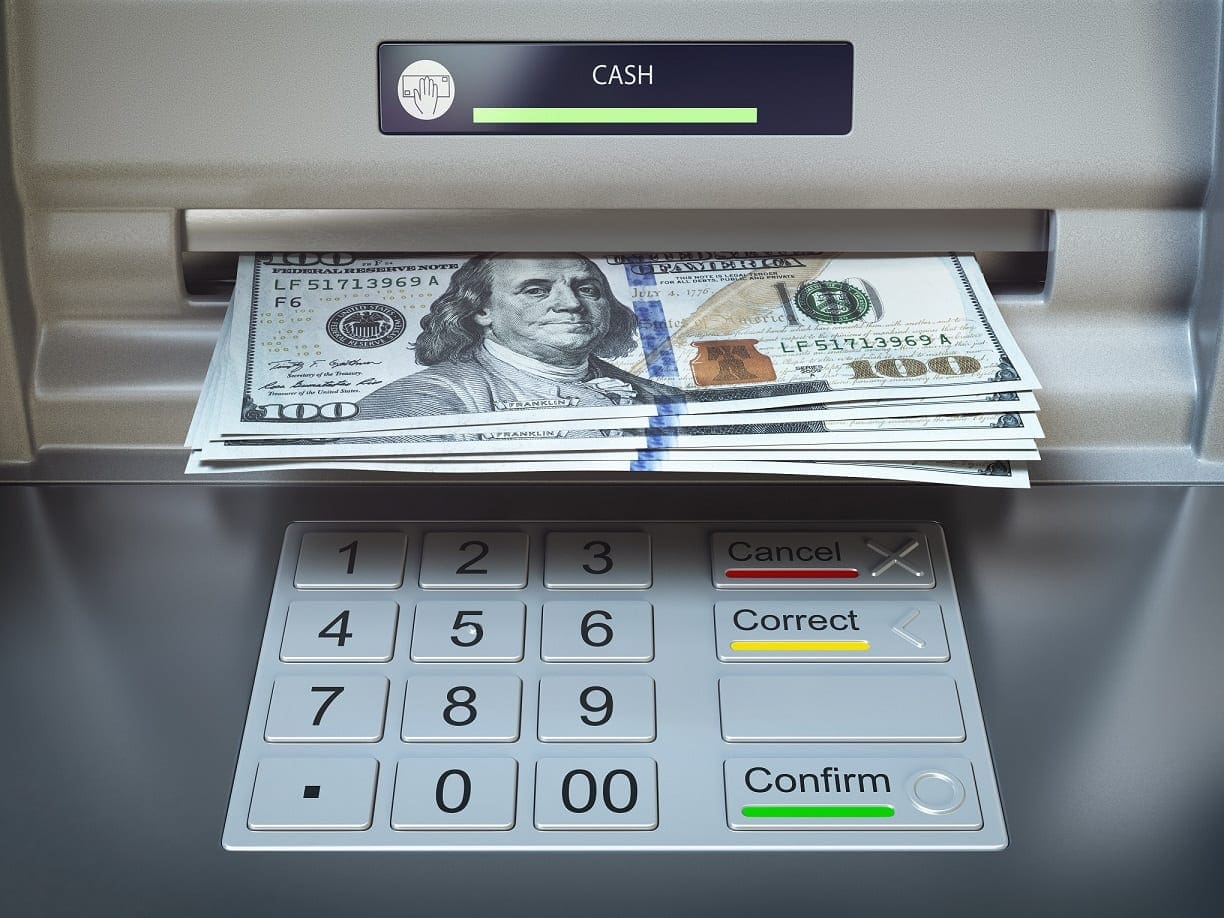
Why ATM Ownership Could Be Your Smartest Business Move in 2024
In the evolving landscape of personal finance and retail services, owning an ATM machine has emerged as a compelling business opportunity. As we look toward 2024, the reasons to consider this venture are more persuasive than ever. In this blog, we will explore the myriad benefits of ATM ownership and why it could be the smartest business move you make next year.
The Persistent Need for Physical Currency
Despite the rise in digital payment solutions, cash remains an essential method of payment for many people around the world. In certain situations and demographic segments, cash is preferred or even necessary. The need for physical currency supports a stable demand for ATM services, making ATM ownership a viable and stable investment. This ongoing need ensures that your investment continues to yield returns as people consistently require access to cash.
Understanding the Financial Benefits
One of the most attractive aspects of owning an ATM is the potential for a high return on investment (ROI). The basic revenue model for an ATM business involves earning a fee for each transaction. These transaction fees can add up quickly, especially in high-traffic locations. Furthermore, the initial costs of purchasing an ATM are relatively low compared to other business ventures, which means it’s possible to recoup your initial investment within a relatively short period, subsequently enjoying a profitable revenue stream.
Here’s a deeper dive into the financial aspects of ATM ownership:
Consistent Revenue Stream
The primary source of income from an ATM is the transaction fee charged to users. This fee is typically set by the ATM owner and can vary based on location, average withdrawal amount, and local competitive rates. For each transaction, the owner earns a fee ranging typically from $1 to $3, or even higher in some locations. In high-traffic areas, the volume of transactions can make this a significant income stream. For example, if an ATM processes 300 transactions a month at a fee of $2.50 per transaction, the monthly revenue would be $750 from fees alone.

Low Overhead Costs
Compared to many other business ventures, the overhead costs for running an ATM are relatively low. Once the initial purchase and installation are completed, the ongoing expenses include:
- Maintenance and Repairs: Modern ATMs are built to be robust and require minimal maintenance, which keeps the costs low.
- Cash Replenishment: While the cash that customers withdraw is not an “expense” (as it is replenished by the withdrawn funds themselves), managing cash flow and ensuring the machine is adequately stocked is a key operational task. The costs associated with this task include hiring an armored service to deliver cash, which may be necessary in busier locations.
- Communication Costs: ATMs need a phone line or internet connection to process transactions, which incurs a monthly fee. However, these costs are generally low and can be easily offset by transaction fees.
High Return on Investment (ROI)
The ROI for an ATM can be exceptionally high, especially when strategically placed. The initial investment for buying an ATM machine can range from a few thousand dollars for a basic model to more expensive for advanced models equipped with higher security features. Given the potential monthly earnings, it’s possible for the machine to pay for itself within a year or less, depending on the transaction volume.
Tax Benefits
Owning an ATM business also offers potential tax benefits. The costs associated with purchasing, operating, and maintaining the ATM can be written off. This includes the depreciation of the machine, operational costs like phone and internet services, maintenance, and even travel expenses related to servicing the machine. These deductions can significantly reduce the taxable income from the ATM, increasing the overall profitability of the investment.



Increased Foot Traffic
ATM machines are not just a standalone source of income; they also serve as a strategic tool to enhance the visibility and customer traffic of other business ventures. This increased foot traffic can lead to numerous indirect benefits, which in turn, bolster overall business profitability. Here’s a closer look at how ATM ownership can significantly drive more customers to a location and the advantages that come with it.
Directing Customers to Your Doorstep
The presence of an ATM can make a business location a destination point for both regular customers and passersby. For many people, the convenience of accessing cash while they are out is a deciding factor in choosing which businesses to visit. When strategically placed in a store, restaurant, or other commercial venue, an ATM attracts visitors who might not have otherwise entered the business. Once inside, these customers are more likely to make spontaneous purchases, directly increasing sales.
Leveraging High-Traffic Locations
For businesses located in high-traffic areas such as shopping centers, tourist areas, or busy street corners, an ATM can significantly amplify the natural foot traffic. In such locations, every passerby who stops to use the ATM is a potential customer who may spend additional time browsing or purchasing. Moreover, even for businesses in less trafficked areas, an ATM can serve as a draw, bringing in locals and visitors who seek out the convenience of a nearby cash machine.
Enhancing Customer Convenience and Retention
Providing an ATM on the premises increases the convenience for customers, making your business a more attractive destination. This convenience not only enhances the customer’s experience but also aids in customer retention. People are likely to return to places where they can easily access multiple services. If a customer knows they can withdraw cash without going out of their way, they’re more likely to revisit, particularly if they can accomplish multiple tasks in one stop, such as shopping or dining out.


Creating Synergistic Business Opportunities
The increase in foot traffic can also create opportunities for synergistic business practices. For instance, a cafe with an ATM might find that customers who came to withdraw money stay for a coffee, while a bookstore with an ATM could see an increase in spontaneous book purchases. Business owners can strategically place products and promotions near the ATM to capture the attention of users and potentially convert a simple ATM transaction into a larger sale.
Strengthening Brand Visibility and Awareness
Every time a customer uses an ATM at your location, it increases brand exposure. This repeated exposure can strengthen brand recall and awareness among local consumers. Additionally, ATMs can be customized with branding, further enhancing this effect. Well-placed signage can also guide ATM users into other parts of the business, increasing the likelihood of additional sales.
Flexibility and Scalability
ATM ownership offers significant flexibility. Once the machines are set up, they require relatively minimal day-to-day management, which can often be handled remotely. This ease of management allows business owners to focus on other areas of their business or even continue their regular jobs if the ATM business is a side venture. Additionally, the business model scales well; owners can start with one or two machines and expand by adding more ATMs as their capital and confidence in the venture grow.
By drawing more visitors to a location, an ATM enhances existing business operations, encourages spontaneous purchases, and increases overall sales. Additionally, it enhances customer convenience and satisfaction, fostering a loyal customer base. For many business owners, an ATM represents a strategic investment that supports and amplifies their primary business activities, making it a smart move in today’s competitive market landscape.
Enhancing Customer Service
Offering an ATM on-site is a value-added service that enhances customer satisfaction by providing them with convenient access to cash. This is especially true in areas where banking facilities might be limited or in venues like festivals or local markets. By improving the customer experience, you not only meet an immediate need but also build goodwill, which is essential for customer retention and positive word-of-mouth.



Minimal Operational Risk
ATMs are designed to be durable and require minimal maintenance. Modern machines are equipped with sophisticated software that ensures transactions are secure and reliable. The risk of technological failure is low, and any issues can usually be resolved quickly by a technician. Additionally, as the owner, you are not handling any of the products directly, which minimizes operational risks associated with inventory management and staffing.
Choosing the Right ATM to Invest in
Investing in an ATM is a strategic business decision that requires careful consideration to maximize returns and operational efficiency. The type of ATM you choose can have a significant impact on its success, influencing everything from transaction fees to customer satisfaction. Here’s a guide to help you select the most appropriate ATM for your business needs.
Understanding ATM Types
Before investing, it’s important to understand the different types of ATMs available on the market:
- Freestanding ATMs: These are the most common types of ATMs and can be placed almost anywhere. They are versatile and highly visible, making them suitable for locations with high foot traffic like shopping malls, entertainment venues, and large retail stores.
- Built-in or Through-the-Wall ATMs: These machines are installed into a wall and are accessible from the outside, making them ideal for banks and 24-hour access areas. They are secure and can operate independently of business hours.
- Countertop ATMs: Smaller and more compact, countertop ATMs are perfect for small retail spaces, bars, or convenience stores where space is limited but additional service is desired.



Considerations for Selection
Selecting the right ATM involves several key considerations:
- Location Needs: Assess the potential locations for placing your ATM. High-traffic areas typically demand a robust, freestanding ATM that can handle a high volume of transactions, whereas a small boutique might benefit more from a compact, countertop model.
- Security Features: Depending on the location, the level of security needed may vary. Look for ATMs that offer advanced security features like encrypted keypads, secure communications, and fraud detection systems to protect against theft and skimming.
- Technological Capabilities: Modern ATMs can provide services beyond cash withdrawals, such as deposits, bill payments, and fund transfers. Consider investing in an ATM that supports these advanced features to increase its utility and attractiveness to users.
- Ease of Maintenance: Consider the maintenance support and service agreements available for different types of machines. An ATM with reliable support and easy maintenance will reduce downtime and keep the machine running efficiently.
- Cost: Analyze the cost-effectiveness of different ATM models. Higher-end models with more features may offer greater long-term returns but will require a larger upfront investment. Ensure the model you choose aligns with your budget and expected ROI.
Vendor and Manufacturer Reputation
When choosing an ATM, it’s crucial to consider the reputation of the vendor or manufacturer. Established providers with good track records are preferable as they are more likely to offer quality machines and after-sales service. Research reviews and testimonials from other business owners to gauge the reliability and service quality of the manufacturer or distributor.
Compliance and Regulatory Considerations
Ensure that any ATM you consider is compliant with current regulations, including those related to accessibility, transaction security, and consumer protection. Compliance not only avoids legal issues but also assures users that their transactions are safe, which can enhance the overall appeal of the ATM.
Future-Proofing Your Investment
With technological advancements rapidly changing how consumers interact with their finances, choosing an ATM that can be updated or adapted to future needs is wise. Look for models that allow for software updates and hardware upgrades to extend the lifespan and relevance of your ATM.
Owning an ATM machine in 2024 represents a unique blend of low overhead, high potential return, and significant ancillary benefits. Whether as a primary business or an additional revenue stream, ATM ownership offers stability in a world where cash remains king in many contexts. This venture not only promises financial returns but also enhances the service offering of your existing business, providing an indispensable convenience to your customers. If you’re looking for a smart business move in the upcoming year, investing in ATM machines could very well be it.
